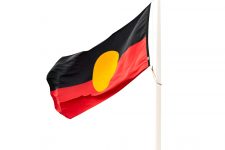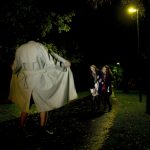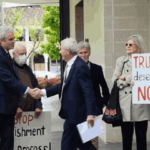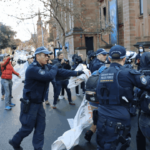Fighting for Life: An Aboriginal Man’s Struggle

Prejudice against Indigenous Australians has been rife since colonisation. Regrettably, the plight of our original Australians is riddled with accounts of horrific abuse and cultural decimation by white colonists, including physical and sexual abuse, and shocking massacres of men, women and children.
One Aboriginal man, named Tuckiar, knew about racism all too well when he faced the Australian criminal courts more than 80 years ago. He was charged with murder, and the case became famous Australia-wide.
The case of Tuckiar v R (1934) exemplifies the racial prejudice historically faced by Aboriginals in the Anglo-Australian criminal justice system.
Tuckiar’s Story
Tuckiar lived with his tribe in the Northern Territory. It was 1933, and there were mounting tensions between the Aboriginal tribes and visiting white ‘settlers’.
The Aboriginals had allegedly killed a number of Japanese people, and four white constables were sent in to investigate. One of these, named McColl, was killed and his body was found with a blood-stained spear lying nearby.
Sometime later, Tuckiar and other Aboriginals were induced to travel by boat to Darwin, where Tuckiar was arrested and charged.
The Trial
Unfortunately, the odds were stacked against Tuckiar right from the start.
Despite claiming self-defence, he faced an unjust trial and was convicted. Tuckiar said: “I chuck spear alonga him before he kill me”. Two Aboriginal witnesses described the incident – and both versions, while slightly different, were consistent with self-defence.
But despite the fact that a strong case for self-defence was evident, the jury were not even instructed to consider this vital issue.
In fact, the trial judge told the jury that Tuckiar’s version of events was “so ridiculous as to be an obvious fabrication.” This was just one of many unfair directions and prejudicial comments.
Tuckiar faced the additional difficulty of having to rely upon other Aboriginals with limited English to translate documents and interpret the formal proceedings of the court.
Even his own criminal barrister was blatantly racist, swearing an affidavit that:
“the Aboriginal is first and foremost a liar to the white man. He will rarely tell the truth at all… The aboriginal has the mind of a child… and he really has no ideas except those of the simplest kind.”
While he did “roll the arm over” for Tuckiar, his closing speech contained the statement that “not even a black man should be convicted on it [the lack of evidence].”
Tuckiar was quickly found guilty and sentenced to death.
The High Court Appeal
The High Court Justices acknowledged the glaring errors of law made by the trial judge, including his failure to direct the jury about the possibility of self-defence.
They also acknowledged the special difficulties faced by Aboriginals in the Anglo- Australian criminal justice system. Justice Starke stated that Tuckiar:
“had no conception of its [the law’s] standards. Yet by that law he had to be tried. He understood little or nothing of the proceedings or of their consequences to him.”
Starke saw that for Aboriginals – given their past treatment – the conduct of the advancing police party may have appeared as an attack, and created a reasonable belief that he had to act in his own defence, and/or the defence on his tribe. Starke concluded that:
“A finding of not guilty, or of manslaughter, was quite open to the jury on the evidence. Yet the learned Judge is silent upon this important aspect of the case, and practically invites the jury to find a verdict of guilty.”
All four Justices of the High Court found that Tuckiar had been denied a fair trial.
The verdict was set aside and a new trial was deemed impossible as it could not go ahead in conditions that were fair to Tuckiar. Even the Chief Protector of Aboriginals for the Northern Territory acknowledged that ascertaining the truth through a further trial would be almost impossible.
So Tuckiar was discharged – but tragically, he suspiciously disappeared on his way home, never to be seen again. The overwhelming consensus was that Tucker was lynched and killed by white people.
Public Opinion and the Aftermath
Few Australians sympathised with the plight of Tuckiar at the time, one newspaper publishing that:
“95% of the people consider this affair a dirty, disgusting, missionary ridden affair… pelt[ing] lead medicine at them [is] the only message that a savage race understands.”
It should be kept in mind that this wasn’t hundreds of years ago – just 80. Indeed, people are still alive today who were children and young teenagers during Tuckiar’s case and its aftermath.
After the case, a number of changes were made to the way that Aboriginals are dealt with in the prevailing criminal justice system. For example, an Aboriginal charged with an offence against a white person was no longer allowed to plead guilty unless they obtained approval from the Chief Protector.
And confessions – which were commonly fabricated or forced – were no longer admissible in court.
The idea of a special court for Aborigines was suggested but rejected, unless the offence was one between Aborigines.
Many of the issues highlighted in Tuckiar’s case are still relevant today, and our legal system struggles to deal with Indigenous Australians in a way that is fair, considering cultural differences and historic experiences.






